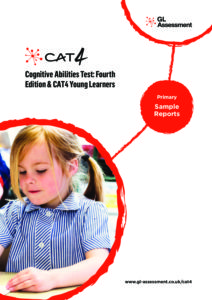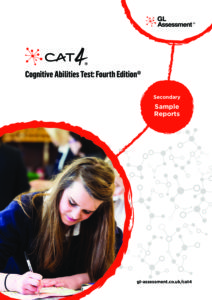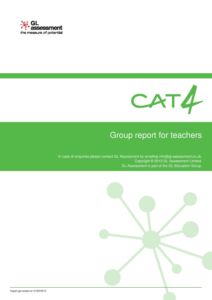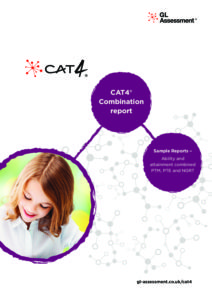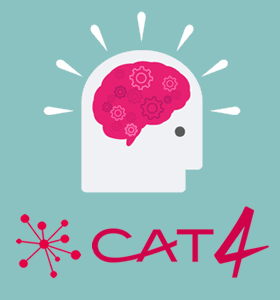
Cognitive Abilities Test (4th ed.) cat4
For: Assessing four cognitive factors associated with academic success
Reading Level: Varies with test level
Format: On Line
Length: Approx 180 minutes for all four factors
Scoring: On Line
Introduction to CAT4
An assessment of reasoning ability can identify where a student’s real strengths lie, free from the constraint of the curriculum and unencumbered by learning barriers.
What does CAT4 measure?
The Cognitive Abilities Test: Fourth Edition (CAT4) provides a robust, standardised measure of cognitive reasoning ability, without reference to curriculum-based material and regardless of previous achievements or first language.
With CAT4, you get invaluable insight into your students’ ability to reason across four distinct batteries: verbal, non-verbal, mathematical and spatial, as compared to the national average.
This allows you to address patterns and adapt your teaching methods to suit individual (or group, where a similar learning profile is shared) needs, ensuring feedback is appropriate and targets are achievable.
Automatic Reporting
Following administration, a range of reports are automatically generated. No need to data-crunch.
Data is presented in visually accessible tables, bar charts and scatter graphs that allow for easy comparison, as well as clear narrative explanations that explain the pupil profile and its implications for teaching and learning.
Reports for teachers
- Group Report for Teachers
- Individual Student Report for Teachers, Students and Parents
- Cluster Report
- Excel Cluster Report
- Strategic Report
- Excel Report
- CAT4 Combination Report
Reports for senior leaders
- Summary Report for Senior Leaders (includes detailed analysis, by teacher, EsL, and two customisable categories)
- PowerPoint Presentation for Senior Leaders (not available for CAT4 Young Learners)
Reports include appropriate indicators including IB levels.
Combined reporting
Combing results with other assessments, such as the New Group Reading Test and Pupil Attitudes to Self and School (PASS):
- spot trends (at individual, group or school level)
- identify students who could be achieving more
- drill down into anomalies and put early intervention strategies in place




